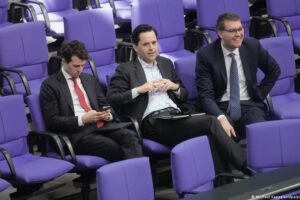
Rob Allen discusses the volatile global cybersecurity space and why a career in cyber is becoming increasingly popular.
October is World Cybersecurity Month and at SiliconRepublic.com, it is the month in which we focus on all things security and privacy. We recently spoke with Rob Allen, a 20-year veteran of the cybersecurity space, who is currently the chief product officer at multinational cybersecurity company ThreatLocker.
Discussing the global cybersecurity landscape, he explained that an issue he believes is becoming increasingly more common is a surge in the use of generative artificial intelligence (GenAI) among cybercriminals, which he said has dramatically lowered the barrier to entry for creating ransomware and other sophisticated attacks.
“Phishing emails, which were once easy to spot, can now look legitimate,” he said. “Attackers are also constantly innovating to bypass traditional detection tools. For businesses, especially in Ireland, where cloud adoption and third-party dependencies are high, this means doubling down on proactive defence, continuous monitoring and strong identity controls becoming more critical than ever.”
But what is making the world we live in so vulnerable? For Allen, threats are compounded by the fact that we are more connected now then we have ever been before, with billions upon billions of devices and applications coming online each year. As organisations move to implement advanced technologies, sacrifices are often made in prioritising progress over stability.
“While innovation moves fast, security often lags behind, cybersecurity is still treated as an afterthought in many cases. On top of that, keeping systems patched and up to date isn’t always a priority for businesses or individuals. This combination of rapid connectivity, complex supply chains and inconsistent security practices has created a perfect storm for cyber vulnerabilities,” he said.
With that in mind, he believes companies are finally beginning to understand the long-term impact of a cyber incident, whether that is the corruption of encrypted files, stolen data or the destruction of trust and reputation that can take years to re-build.
“Every organisation is a potential target, regardless of size. Add to that the complexities of remote work, cloud adoption and the evolving threat landscape, and it’s no surprise the demand for skilled cybersecurity professionals has skyrocketed.”
But it has been an eventual few years, so what does a career in the cyber space look like now?
Cybersecurity in 2025
As a somewhat alternative career route, Allen discussed the merits of gaining experience as an ethical hacker, a role previously held by ThreatLocker founder and CEO Danny Jenkins. Allen explained that it can empower a cybersecurity professional to think outside of the box and see what is often overlooked by others.
“Attackers don’t follow the rules,” he stated. “They look for the easiest way in, whether that’s an unpatched system, an over-permissioned account, or a human mistake. And sometimes the attacker is an internal threat.”
Allen describes cybersecurity as a rewarding career in a growing field that doesn’t require years of formal or traditional education to enter, and he urged young people with an interest in hacking or technology to consider putting those skills to good use – by protecting businesses and individuals, rather than exploiting them.
“With the right mindset and training, they can play a critical role in defending the digital world and shaping the future of security.”
And for those considering a more linear, or standard, entry into the cybersecurity industry, he noted there are a plethora of divisions within cybersecurity to specialise in, but what truly matters is amassing a range of transferrable soft skills – such as adaptability, risk management, communication and leadership – as the sector continues to evolve.
Furthermore, all professionals should prioritise having more than just foundational knowledge of the zero trust concept. That is a cybersecurity framework that works on the principle of never trust, always verify and assume the potential for threat, be it internal or external.
“I want people and organisations to be more secure. Whether that’s with ThreatLocker or not,” said Allen. “Therefore, companies need to move to a zero trust model. The reality is, attackers are always looking for the easiest way in, and traditional detection-based security can’t keep up with the speed and sophistication of modern threats.
“Zero trust – deny by default, allow by exception – is the most effective way to reduce risk and take control of your environment.”
Don’t miss out on the knowledge you need to succeed. Sign up for the Daily Brief, Silicon Republic’s digest of need-to-know sci-tech news.





